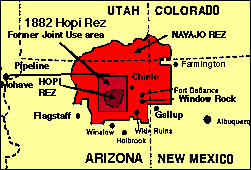
I read a
story today about NASA's plans to build a
permanent base on the Moon by 2024. They plan to staff it continuously, beginning with a complement of four people.
How interesting that the likely location for such a base is
Shackleton Crater, near the South Pole of the Moon. Sure, the crater is named for the renowned Antarctic explorer
Ernest Shackleton, but there is an even stronger connection between the scientific stations in Antarctica today and the planned Moon base.

Much like the "winter-over" workers and researchers who brave the cold of the entire Antarctic winter, waiting for the return of the full Summer staff to the South pole region of Earth, the personnel at the Lunar South Pole will be similarly isolated.
What's the anthropology angle? Well, this Moon base will be home to a small culture. It will certainly be very similar to ours here on Earth, yet the separation from Earth and the close quarters will give birth to new cultural manifestations we can easily imagine (an, no doubt, many we cannot).
Papers have been written about life at
McMurdo Station during the Winter (e.g.
here,
here), studying the effects of isolation and harsh conditions, and the adaptations of those subjected to them. NASA itself has pulled together an
enormous bibliography of scholarly works which hint at the problems to be faced by space-faring crews, and they actually list papers about the winter-over staff at McMurdo! NASA is nothing, if not thorough.
What might make the Moonbase culture distinct? Let's think about the many traits of culture that Anthropologists examine:
LANGUAGE AND SYMBOLS
Nobody can beat NASA and/or the military when it comes to inventing their own words and acronyms for everything. No doubt a whole new vocabulary of Moon-specific terms (both slang and technical jargon) will emerge.
DIVISION OF LABOR
It would be interesting to see how this aspect of a culture develops. I'm certain that NASA ground planners and controllers will map out everyone's responsibilities, but once these people have been on the Moon for a while, they will probably be calling a lot of the shots themselves for the little things. Sure, each individual has job assignments, but they aren't just working there-- they are living there.
EXCHANGE
I would suspect that even though plans for an economy are probably missing from the NASA blueprint, exchange systems always arise. What could be traded on the Moon? What about work shifts, sleeping bunks, lockers, books, videos, personal food items, clothing, backrubs, radio time slots, and music?
MARRIAGE AND KINSHIP
Hmm... I'm not sure that NASA is ready for married couples in space, but relationships happen (both platonic and otherwise). I'm sure NASA has invested a great deal of research into this topic, and how to make sure the mission succeeds regardless.
SOCIAL/POLITICAL ORGANIZATION
There will be a natural hierarchy of command determined by rank, even among civilians. But that doesn't stop people who live with one another 24/7 from creating their own social groups and hierarchies. Will there be any stratification? Military vs. civilian, officer vs. noncom, science vs. infrastructure? How will group decisions that do not affect the mission be decided? A political structure, no matter how informal, will likely develop.
MAGIC AND RELIGION
Magic? I'll bet there are plenty of astronauts who are more superstitious than a major-league ballplayer. Whether they admit it or not, someone up there living with just a wall between them and vaccuum is going to avoid doing things they deem unlucky.
As for religion, we must expect that most (if not all) of the crew at the Moon basse adhere to one faith or another. How will that play out, assuming there are from differing religions? Will they hold unified services, blending traditions from each, almost creating a new type of observance? Or perhaps each will keep to themselves. One other possibility is that more than one person might be members of a single faith, and their combined practice (to the exclusion of the others) may lead to divisions within the culture.
If you ask me, the NSF should fund an Anthropologist to study the Moon culture. With a little notice, I could be available...
 I was really distracted at the end of the semester, and since then I've been trying to catch up on other things... except for blogging.
I was really distracted at the end of the semester, and since then I've been trying to catch up on other things... except for blogging. A new paper in the journal
A new paper in the journal  I was fortunate to meet a few members of the faculty from ASU's School of Human Evolution and Social Change during a meeting of the Undergraduate Anthropology Association last week.
I was fortunate to meet a few members of the faculty from ASU's School of Human Evolution and Social Change during a meeting of the Undergraduate Anthropology Association last week.  I read a
I read a  Much like the "winter-over" workers and researchers who brave the cold of the entire Antarctic winter, waiting for the return of the full Summer staff to the South pole region of Earth, the personnel at the Lunar South Pole will be similarly isolated.
Much like the "winter-over" workers and researchers who brave the cold of the entire Antarctic winter, waiting for the return of the full Summer staff to the South pole region of Earth, the personnel at the Lunar South Pole will be similarly isolated.
 I read with great interest this news item from Science Magazine's website:
I read with great interest this news item from Science Magazine's website:  It was nice to have the summer off, but now it's back to the quest.
It was nice to have the summer off, but now it's back to the quest. Reuters is
Reuters is 